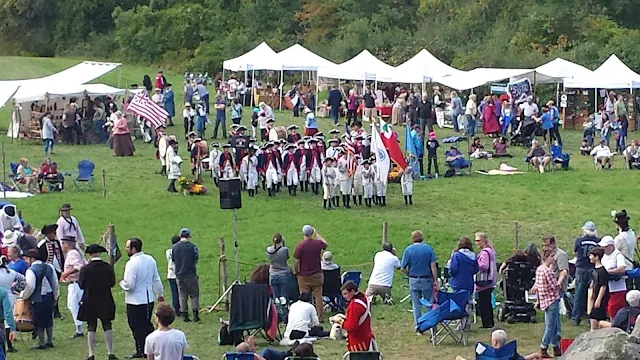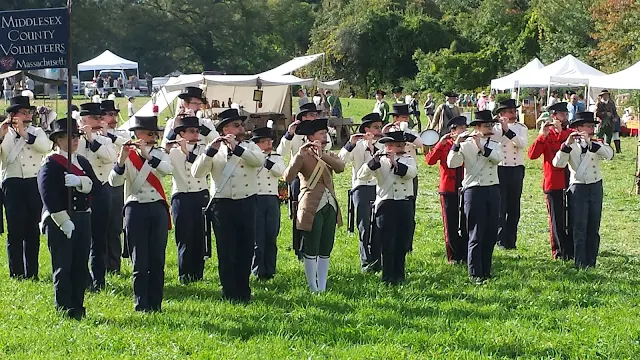I guess it is officially fall here in New England. How do I know this? Because Saturday was the annual Colonial Faire and Fife and Drum muster at the Wayside Inn in Sudbury. This event is something we look forward to each year. A chance to get together with friends, enjoy the fall weather, hear lots of very good Fife and Drum music and have a couple beers. This event has been going on since, well I do not know. I have been going since the mid 1970's and it was an annual event then.
What happens? There are about 30 different Fife and Drum bands. Some are very small, only about a dozen members. Others very large with 30 or more. Costuming (this is not where you go for authenticity) ranges from colonial type dress to 19th century band uniforms and everything in between. There are bands that have been together performing for decades; and other started just last week. But each groups get a time to appear on stage and perform. At the end off the day lots of people get together to jam.
In addition there are craft persons selling their wares. Blacksmiths and artist and basket weavers. Individuals selling reproduction colonial clothing. This year there were a farm that raises Lama and sells their wool. Our dog Fritz was most puzzled by what these strange animals were!
 |
| Fritz meets a Lama! |
One group we look forward to each year are the Middlesex County Volunteers. They are one off the larger and very professional groups out there. They have multiple CD's out there and they travel across the country performing. This year they were at The Edinburgh Scotland at the muster there.
In the past they have been dressed in 1779 type continental line musician uniforms. Reversed coat of white with blue facings. But this year they are trying out a War of 1812 type uniform of trousers, short coat and round hat. Really smart!
All in all a very fun day!




























